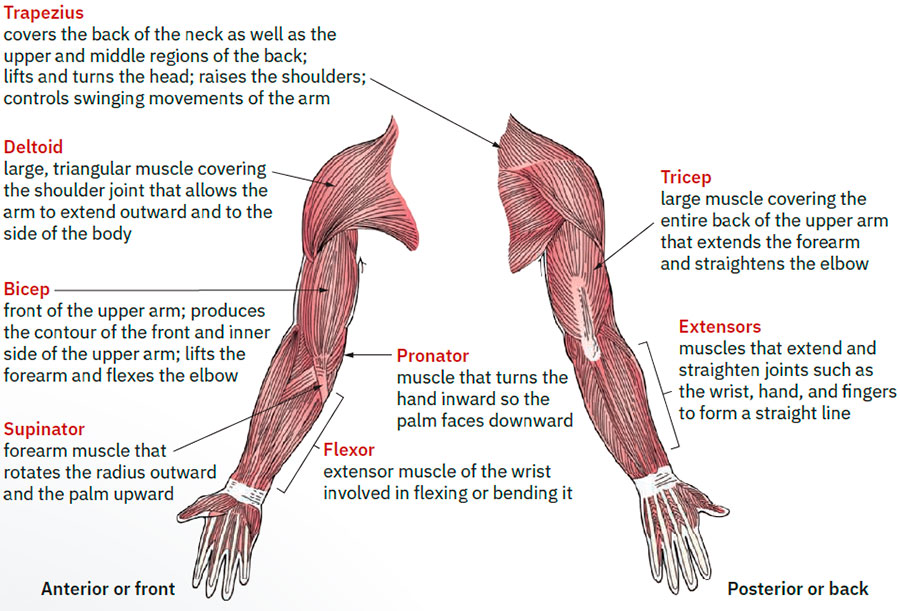The Role and Importance of Shoulder and Arm Muscles in Cosmetology
As cosmetologists, we often focus on the muscles of the face and neck, neglecting to realize the significance of the shoulder and arm muscles in our work. The upper limb muscles, particularly the trapezius, deltoid, bicep, tricep, pronator, supinator, flexor, and extensors, are crucial in performing daily cosmetology tasks, ranging from massaging to applying treatments. Let’s dive deeper into the structure and role of these muscles and explore their relevance in cosmetology.

Shoulder and Arm Muscles
Shoulder and Arm Muscles: An Overview
The shoulder and arm muscles are central to our upper body mobility and strength. These muscles are complex and organized to facilitate an extensive range of motion and precise control. The principal muscles in the shoulder and upper arm include the bicep, deltoid, and tricep.
The bicep muscle is located at the front of the upper arm, responsible for the contour of the front and inner side of the upper arm. It lifts the forearm and flexes the elbow.
The deltoid muscle is large and triangular, covering the shoulder joint. It allows the arm to extend outward and to the side of the body.
The tricep is a large muscle that covers the entire back of the upper arm. It extends the forearm and straightens the elbow.
The trapezius muscle covers the back of the neck and the upper and middle regions of the back. It lifts and turns the head, raises the shoulders, and controls swinging movements of the arm.
As a cosmetologist, you will mostly use the forearm muscles, which include the pronator, supinator, flexor, and extensors. The pronator muscle turns the hand inward so the palm faces downward, and the supinator muscle rotates the radius outward and the palm upward. The flexor is an extensor muscle of the wrist involved in flexing or bending it, while extensors extend and straighten joints like the wrist, hand, and fingers.

Relevance in Cosmetology
Understanding these muscles’ structure and functions is essential for cosmetologists. As they are used extensively in performing different procedures, fatigue or overuse can lead to discomfort or potential injury.
The deltoid, for instance, is used every time a cosmetologist lifts their arm to apply makeup or conduct a facial. Similarly, understanding the pronator and supinator muscles’ function can help a cosmetologist maintain the proper wrist and hand positioning while doing intricate work like applying eyeliner or sculpting eyebrows.
Furthermore, knowledge about these muscles can help cosmetologists understand the signs of overuse and take appropriate measures to prevent injury. For instance, continual flexion and extension of the wrist (using the flexor and extensor muscles) can lead to conditions like carpal tunnel syndrome. Regular breaks, stretching exercises, and maintaining a proper posture can help prevent these issues.
A cosmetologist’s role goes beyond understanding and caring for the skin. It involves the complete understanding of various muscular systems that facilitate the performance of tasks efficiently and comfortably. By recognizing the importance of shoulder and arm muscles, cosmetologists can not only improve their skills and services but also maintain their well-being, ensuring a long, fulfilling career.






